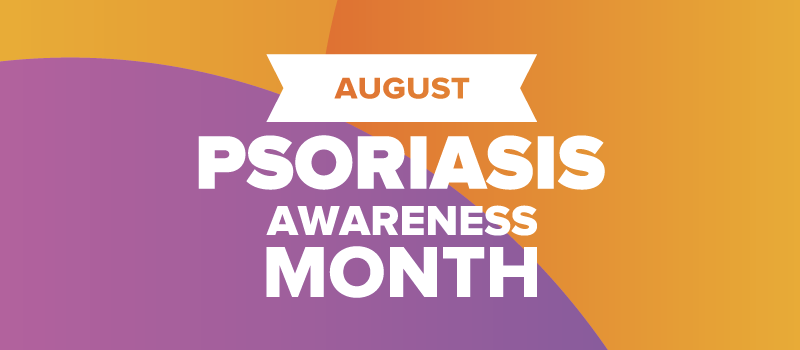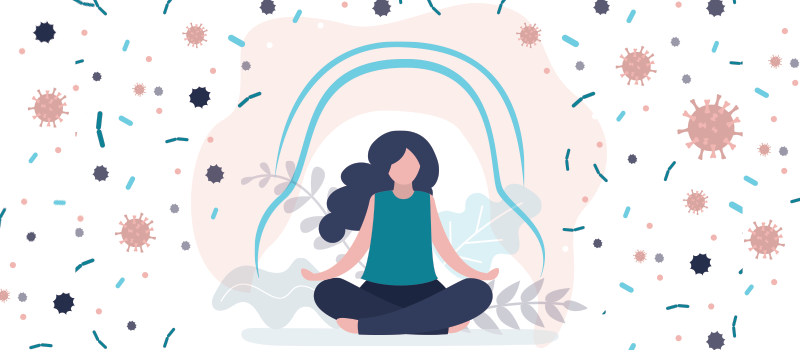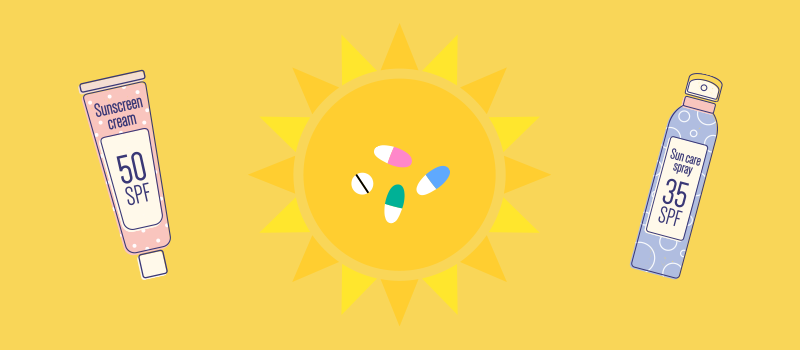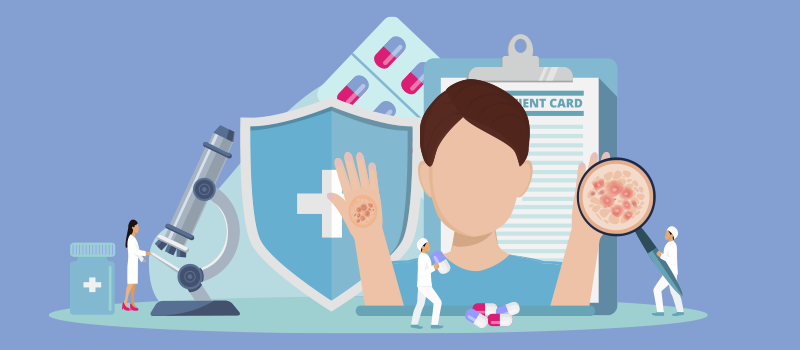What’s the Buzz
The Bee Healthy Blog
What’s the Difference Between a Rash and Shingles?

Shingles or herpes zoster is an infection caused by a virus called the varicella-zoster virus. It is the same virus that causes chickenpox. In people who have had chickenpox in the past, the varicella-zoster virus can lie dormant for many years and then reactivate to cause shingles herpes zoster if the immune system becomes weak or stressed. Shingles is associated with a painful rash. The shingles rash has certain typical features that can help identify the condition.
Shingles is quite common. The Centers for Disease Control and Prevention (CDC) estimates that 1 in 3 Americans will develop this condition at some point in their lifetime. It is more common in people above age 60 but can occur in younger individuals, including children.
Although it is not a life-threatening condition, a shingles rash can be very painful. Early diagnosis and treatment can shorten the duration of the illness and prevent complications like postherpetic neuralgia. In people who develop postherpetic neuralgia, the pain lasts well after the shingles blisters have cleared.
How do you tell the difference between a shingles rash and a rash caused by something else? Continue reading to find out.
What does shingles feel like before the rash?
The most common symptom of shingles is a painful rash of fluid-filled blisters that appears in a band-like pattern on one side of the body. However, some people develop other symptoms before the shingles rash itself appears. These symptoms may include fever, feeling generally unwell, headache, muscle aches, and burning, tingling, numbness, or itching in the affected area.
What does early shingles look like?
Roughly 1-5 days after the first symptoms of shingles herpes zoster appear, a characteristic rash develops, typically on the chest or torso. The shingles rash usually affects a particular area on one side of the body and does not cross over the midline. It consists of a band or stripe of fluid-filled blisters. As noted, the rash is most commonly on the chest or torso, but it can also affect the face, neck, or eyes. The painful rash is typically itchy or burning until the blisters start scabbing over in about 7-10 days. The blisters eventually become smaller and disappear. A shingles rash typically lasts 2-4 weeks in total.
What do shingles look like on the skin?
You should suspect a shingles rash if you have pain, burning, itching, numbness, or tingling in a specific part of the body, followed by the appearance of a red rash in a stripe-like pattern on the left or right side of your body. Besides the chest or torso, the rash can also occur on one side of the face or neck or around one eye. A shingles rash typically consists of blisters filled with a clear fluid. The shingles blisters break open and crust over in about a week to 10 days.
It is not a good idea to try and diagnose a shingles rash yourself without being medically reviewed. A doctor can make an accurate diagnosis of shingles herpes zoster and prescribe the appropriate treatment. Early treatment can help reduce the severity of your symptoms and the duration of your illness as well as prevent complications.
How do you rule out shingles?
Numerous conditions can cause skin rashes. How do you tell the difference between a shingles rash and something else? Here are some common skin conditions that cause rashes and their typical features.
- Psoriasis usually causes patches of red, scaly skin. Some types of psoriasis can cause blisters which can resemble a shingles rash. However, unlike shingles, the red, scaly rash caused by psoriasis does not fade over time. Rather, it tends to get worse and may crack and bleed.
- An allergic reaction to a medication or exposure to something like poison ivy can cause raised or flat red sores on the skin with blisters. This rash may be confused for a shingles rash. However, allergic skin reactions tend to clear up on their own 2-3 weeks after exposure. Another type of allergic reaction called hives consists of red, bumpy, itchy, swollen areas on the skin. Again, hives tend to go away on their own.
- Eczema is a skin condition caused by an exaggerated response of the immune system to common allergic triggers. The red, itchy, and sometimes oozing patches of skin caused by eczema can be mistaken for a rash caused by the shingles virus. Doctors usually diagnose and manage eczema by identifying the allergic triggers that cause it.
- Ringworm is a fungal infection that causes red, scaly, itchy patches of rash on the skin. These patches can sometimes blister and mimic the skin conditions caused by shingles herpes zoster. Ringworm is contagious and spreads easily through skin-to-skin contact. A healthcare provider can diagnose and treat the condition appropriately.
- Herpes simplex is the virus that causes cold sores. The rash caused by this virus can sometimes be mistaken for shingles. However, herpes simplex is usually localized around the mouth and genitals.
Shingles diagnosis and treatment
The band or stripe of shingles rash, which most often occurs on the chest or torso, is the easiest way to identify shingles. There is no cure for shingles, but a healthcare provider can quickly make the diagnosis and offer treatment to relieve pain and hasten your recovery time. Antiviral medications can prevent the virus from multiplying, thus reducing the severity of your symptoms. Your doctor can also give you medications to relieve the pain from the shingles rash. Applying cold compresses to the area can help as well.
According to the Centers for Disease Control and Prevention, the shingles virus can be transmitted to other people. It will not cause shingles but can potentially cause chickenpox. It is worth noting that shingles blisters are no longer contagious once they scab over and stop weeping. However, until this happens, it is important to keep the area covered when around other people.
Prevention
You can prevent shingles by getting vaccinated at a health and wellness clinic. The chickenpox vaccine is routinely given to children and can help prevent shingles. Adults who have not had chickenpox can also get the vaccine. There is also a specific shingles vaccine that is recommended by the FDA for people over 50 years old. The CDC recommends the shingles vaccine in adults over 60 who have a history of chickenpox. Both the chickenpox vaccine and shingles vaccine do not guarantee that you will not get shingles. However, getting vaccinated does significantly decrease your risk of getting shingles.
References:











SOCIAL